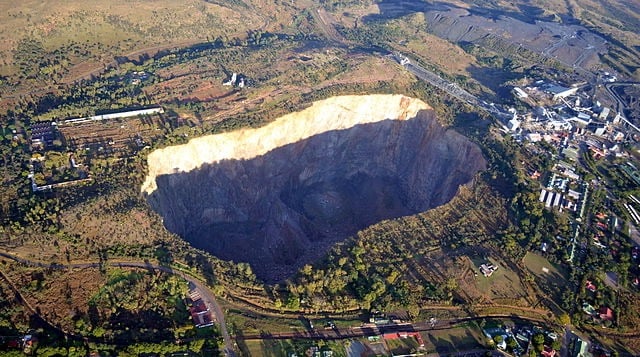A chilling BBC investigation has exposed a horrifying reality in South Africa’s illegal gold mining industry, where vulnerable children, often trafficked from neighboring countries, are subjected to sexual abuse and forced labor in abandoned mines. The investigation, centered around the Stilfontein mine in North West Province, reveals a dark underworld controlled by criminal gangs, with minors as young as 15 enduring unimaginable exploitation.
The Grim Reality of Illegal Gold Mines
South Africa, once a global leader in gold production, is home to approximately 6,000 abandoned mines, left unprofitable by multinational corporations. These disused shafts, known as “zama zama” mines (Zulu for “take a chance”), have become hubs for illegal mining, costing the economy an estimated $3.2 billion annually. Criminal syndicates exploit these lawless environments, luring impoverished and undocumented migrants, including children, with false promises of work.
According to whistleblowers like Jonathan, a former miner now in his late 20s, minors are recruited not only for cheap labor but also for sexual exploitation. Jonathan, whose identity is protected due to fear of gang reprisals, described how children, primarily from Mozambique, Zimbabwe, and Lesotho, are manipulated underground. “If that kid is desperate for money, he will take the risk,” he told the BBC, recounting how sex is used as both punishment and “payment” for gold found by the children.
Stilfontein Mine: A Humanitarian Crisis
The Stilfontein mine gained international attention in 2024 following a police operation named Vala Umgodi (“seal the hole”), launched in December 2023 to curb illegal mining. Authorities blockaded the mine, cutting off food and water supplies to force miners to the surface. This hardline approach led to a humanitarian crisis, with footage emerging of emaciated survivors and body bags. By January 2025, at least 78 corpses were recovered, and 246 survivors, including 31 children, were rescued. All 31 children were Mozambican nationals, and 27 were repatriated in November 2024.
Gugu Xaba, CEO of Save the Children South Africa, highlighted the severe trauma endured by these children, many of whom witnessed or experienced sexual abuse. “They were promised jobs but faced exploitation instead,” she said, noting that adults groom minors over time before subjecting them to repeated abuse. The psychological toll includes trust issues and mental devastation, with some children too afraid to testify against their abusers.
Criminal Gangs and Trafficking Networks
Mining researcher Makhotla Sefuli confirmed that criminal gangs deliberately target children, abducting them from neighboring countries and confiscating their documents to trap them in the mines. “Most children are trafficked to be used as sex slaves,” Xaba added, describing a system where pimps profit from the daily abuse of minors. The underground economy is disturbingly sophisticated, with markets, red-light districts, and even “zama-zama graveyards” where bodies of those killed by gangs or rockfalls are left.
The recent escape of alleged ringleader James Neo Tshoaeli, known as “Tiger,” from police custody in January 2025 underscores the deep corruption enabling this industry. Tshoaeli, accused of assault, torture, and hoarding supplies, was reportedly aided by police officers, prompting an internal investigation.
Government Response and Criticism
The South African government, led by Mining Minister Gwede Mantashe, has defended its crackdown, labeling illegal mining an “attack on the economy.” However, the Vala Umgodi operation has faced backlash for its disregard for human rights. The South African Human Rights Commission is investigating whether the police blockade violated the miners’ right to life, with reports of survivors resorting to eating vinegar and toothpaste to survive.
Critics, including the Democratic Alliance, argue that the operation “got badly out of hand,” calling for an independent inquiry. Community protests, with placards reading “#FreeTheMiners” and “Stop Xenophobia,” reflect growing public discontent, particularly over the treatment of undocumented migrants, who are often scapegoated in South Africa’s high-unemployment climate.
What Can Be Done?
Addressing this crisis requires a multi-faceted approach:
- Strengthen Anti-Trafficking Measures: Enhanced border controls and international cooperation to dismantle trafficking networks targeting children.
- Rehabilitate Abandoned Mines: Government investment to secure or repurpose the 6,000 disused mines to prevent criminal activity.
- Support for Survivors: Trauma-informed care and legal protections for child survivors, encouraging them to testify without fear of deportation.
- Economic Alternatives: Job creation programs to address the poverty and unemployment driving illegal mining.
Organizations like Save the Children South Africa are already aiding survivors, but systemic change is needed to protect vulnerable children from this dystopian underworld.
Stay Informed
The horrors uncovered in South Africa’s illegal mines are a stark reminder of the global fight against child exploitation and human trafficking. Stay updated on this developing story by following trusted sources like the BBC and supporting organizations working to protect children’s rights.



